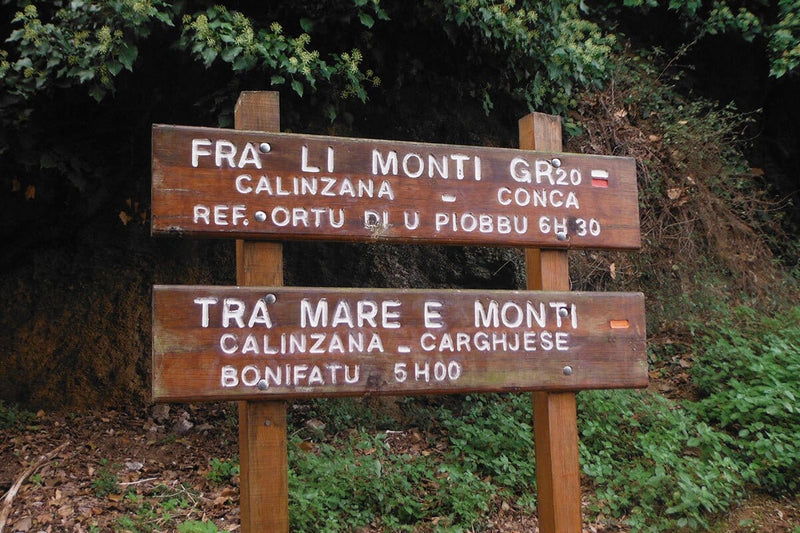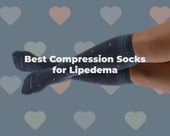
I hiked 110 miles on Europe’s toughest trail, and I did it by myself.
After hiking for sixteen days, covering 110 miles, summiting six peaks along the way, crossing wind swept ridges and experiencing breathtaking views, “Je l’ai fait!” I did it!
It’s a few minutes after 7 a.m., on a crisp morning in September. I’m in Calenzana, a small town in the foothills of Northern Corsica. It’s the starting point of the GR 20, a long-distance hike along the island’s jagged mountain range.
Finally, after months of training and preparing for my solo adventure, I’m at the trailhead of Europe’s toughest trekking route. For the next eighteen days I’ll walk 110 miles, cover over 30,000 ft. of elevation change and hope to climb a few peaks along the way.
At the trailhead, I make a quick adjustment to my 22 lbs. backpack and off I go. Taking advantage of the crisp morning air, I follow the narrow path to the first lookout across jungle-like foothills and the narrow coast line. Thankful for this short break, I catch my breath, enjoy the view and take a sip of water before I continue.
The first few days on these trips are always the hardest. It takes a while to work out the bugs; getting used to the backpack weight, frequently adjusting boot laces to avoid hot spots or blisters and finding a comfortable walking rhythm.
Over the years I have developed my own strategy to hike at the same speed for at least one hour without taking a break. Important factors for my hiking speed are altitude, terrain, distance and weather conditions.
A mid-afternoon thunderstorm is in the forecast, and I watch the towering clouds as I follow the narrow path through patches of shady forest and across the small suspension bridge over the boulder chocked Figarella Gorge. The humidity hits me hard as I follow the stream in the direction of the Auberge de la Forêt de Bonifatu where I’ll spend the night.
 I’m sipping on a hot cup of tea, comfortably tucked into my sleeping bag as the first rain drops hit the tent. After the short but furious thunder storm, I prepare dinner and chat with a couple of fellow hikers who plan to complete the GR 20 within seven days. An updated weather forecast, provided by the camp host, is helpful to plan tomorrow’s route to Refuge de Carrozzu. I settle into my tent at 6:30 p.m. and prepare for an early start to hopefully stay ahead of the afternoon rain.
I’m sipping on a hot cup of tea, comfortably tucked into my sleeping bag as the first rain drops hit the tent. After the short but furious thunder storm, I prepare dinner and chat with a couple of fellow hikers who plan to complete the GR 20 within seven days. An updated weather forecast, provided by the camp host, is helpful to plan tomorrow’s route to Refuge de Carrozzu. I settle into my tent at 6:30 p.m. and prepare for an early start to hopefully stay ahead of the afternoon rain.
The next day, the 2,408 ft. ascent to the hut is steep and progress is slow due to oversized steps and loose rocks on the trail. I feel tiny among the granite spires towering above and the roaring Spasimata River below me. The refuge and campground are nestled in a small rocky nook above the river. Due to lack of solid ground, the landing pad for helicopters is mounted to a vertical granite cliff. This spot must be an extremely busy place in summer, but this late in the season I can freely select a comfortable spot to set up camp.
It’s a completely different scenario for hikers who decide to spend the night indoors. Carrozzu is one of the oldest refuges along the GR 20 and space is extremely limited; the dormitory is small, and the indoor kitchen crowded and draped with wet rain gear. It was a tough day; my hips still need to get used to the weight of the backpack and, especially in moments like this, I cherish the luxury of having my own shelter. It’s a matter of a couple of days until I’m in sync with my pack weight.
 The gîte d’étape (mountain huts) are widespread in Corsica, where basic accommodation in dormitories and evening meals prepared by host are offered during the summer months. Camp sites are available for a small fee, including access to bathroom facilities, drinking water and in most cases, self-cooking facilities.
The gîte d’étape (mountain huts) are widespread in Corsica, where basic accommodation in dormitories and evening meals prepared by host are offered during the summer months. Camp sites are available for a small fee, including access to bathroom facilities, drinking water and in most cases, self-cooking facilities.
For solo hikers like me, these huts are an important point of contact from where updated weather forecasts and trail conditions can be obtained. Hosts are genuinely interested in everyone’s story and like to share anecdotes about their life in Corsica’s remote valleys.
Finally, on day three, I headed into real mountain terrain crossing granite slabs which look like huge tiles mounted to the slope of the ravine at a thirty-degree angle and leading to the first pass at 6,644 ft. This 4,166 ft. elevation gain within 2 miles is my first endurance and balance test. Many more will follow.
A stiff breeze greets me on the Muvrella pass, I catch my breath while gazing across a sea of sunlit peaks and narrow valleys. I lose the view quickly as I descend on the steep trail towards Haut-Asco, a small ski resort at the base of Monte Cinto (8,877 ft.), the islands highest peak.
 I set up camp on a lush patch of grass before taking a dip in the freezing water of the nearby creek and soaking up the sun on a flat boulder. Things are going great, my backpack fits well and seems to become a part of me, my food rations are tasty and satisfying and, most important, my feet are happy; No hot spots or any signs of blisters. My secret weapon for healthy feet is my multiple times tested sock/boot combination; compression socks from Sockwell, a Chattanooga, Tennessee, based company and hiking boots from Kenetrek Boots Company based in Bozeman, Montana.
I set up camp on a lush patch of grass before taking a dip in the freezing water of the nearby creek and soaking up the sun on a flat boulder. Things are going great, my backpack fits well and seems to become a part of me, my food rations are tasty and satisfying and, most important, my feet are happy; No hot spots or any signs of blisters. My secret weapon for healthy feet is my multiple times tested sock/boot combination; compression socks from Sockwell, a Chattanooga, Tennessee, based company and hiking boots from Kenetrek Boots Company based in Bozeman, Montana.
The following days include at least one 800 ft. ascent with oversized steps followed by a tough descent of three to four hours. In some sections steel cables or chains, which are bolted in the rock, aid hikers to descend or ascend steep rock sections.
The Corsican flag which symbolizes the liberation of the people, marks most high passes from where, on clear days, both coastlines can be seen. On Pointe des Eboulis (Mass of Fallen Rock), I’m facing one of the most frustrating decisions a climber must make; abandoning a summit attempt. The ascent of Monte Cinto is out of question due to inclement weather. A thick blanket of misty fog shrouds the upper part of the mountain which, according to the weather forecast, won’t clear for the next couple of days. It would be great to add the island’s highest peak to my climbing résumé, but six other mountain tops are awaiting me on my way to Conca, the final destination of my trek.
Rest days are sacred to me. It’s a nice break from the trail routine and a great opportunity to take care of basic chores; laundry, equipment inspection and taking food rations inventory. My tent is pitched by the bank of the Crucetta River where I claim one of its natural pools filled with glacial water for a much-needed bath. A quick dip is invigorating (freezing, to be truthful) but soothing for my tired legs and feet.
Refuge Tighiettu is a few minutes’ scramble away, tucked in between boulders as big as city blocks, the perfect shelter against the wind gusts which frequently roar through the narrow canyon. I check-in with the hut guardian, get an updated weather report and prepare for my first summit the following day; Paglia Orba. This 8,284 ft. high granite dome is known as the Queen of the Corsican mountains.
 Days later and a dozen valleys further South, I understand why Paglia Orba earns this name. Looking North, while standing on the top of Monte Rotondo (8,602 ft.), the island’s second highest point, I recognize the familiar rock formation illuminated by the early morning sun. A truly majestic sight.
Days later and a dozen valleys further South, I understand why Paglia Orba earns this name. Looking North, while standing on the top of Monte Rotondo (8,602 ft.), the island’s second highest point, I recognize the familiar rock formation illuminated by the early morning sun. A truly majestic sight.
I’m two days from the mid-way point, Vizzavona, a charming village from where most hikers leave the trail to board the train to reach the coast. From now on I’ll follow the “GR 20 Sud” trail markers.
After ten days living off the grid, I surprise the camp ground host by politely declining the 5 Euros surcharge for unlimited Wi-Fi access. After learning that I’m tackling the entire GR 20 by myself, he is completely confused and grants me a discount on my order of an Omelette à la Corse, a chunk of cheese and Prizuttu cured ham, local delicacies and an excellent source of protein.
As I move onward, the landscape changes immediately; tall pines, lush oak and chestnut trees replace the weather-beaten alder shrubs and aspen trees. Intimidating storm clouds appear more frequently, but if I maintain my pace, I should reach the end of the trail before the first storms, typical for October, hit the Eastern slopes of the mountain range. Autumn is in the air; at night the temperatures drop below 10°F, but the days are clear, the views breathtaking and the sun has the mellow golden glow.
 I’m on my descent to Conca and occasionally observe the sky above me. It’s getting darker by the minute and I hope to make it to the finish line of my traverse without getting wet. It doesn’t happen. Two hours before reaching Conca I’m getting soaked by torrential rain but at this point nothing can put a damper on my mood. I feel victorious! At least I got to use my rain pants once.
I’m on my descent to Conca and occasionally observe the sky above me. It’s getting darker by the minute and I hope to make it to the finish line of my traverse without getting wet. It doesn’t happen. Two hours before reaching Conca I’m getting soaked by torrential rain but at this point nothing can put a damper on my mood. I feel victorious! At least I got to use my rain pants once.
After hiking for sixteen days, covering 110 miles, summiting six peaks along the way, crossing wind swept ridges and experiencing breathtaking views, I reach the hostel La Tonnella in Conca. It’s the first night since leaving Paris almost four weeks earlier that I indulge in a long hot shower and spend the night in a comfy room. After a hearty Corsican dinner and savoring wine from the nearby vineyards, I sink into my sleeping bag and listen to the rain drumming on the roof as I drift off to sleep.
“Je l’ai fait!” I did it!
 Growing up in Switzerland, I started ski racing and mountaineering in the Alps at a very young age. I have always loved to travel and adventure. In addition to the U.S. and Switzerland I also lived in Nepal, Egypt, Turkey, England and several countries in South America.
Growing up in Switzerland, I started ski racing and mountaineering in the Alps at a very young age. I have always loved to travel and adventure. In addition to the U.S. and Switzerland I also lived in Nepal, Egypt, Turkey, England and several countries in South America.
In 2015 I received a “Live Your Dream” Grant from the American Alpine Club for my three-summit climbing project in Peru.
My husband and trusted climbing partner Mike and I are currently based in Missoula, Montana, the perfect location to plan and train for our next adventure. Our mission is to live simply and inspire others to create their own adventures, no matter how big or small!


















































